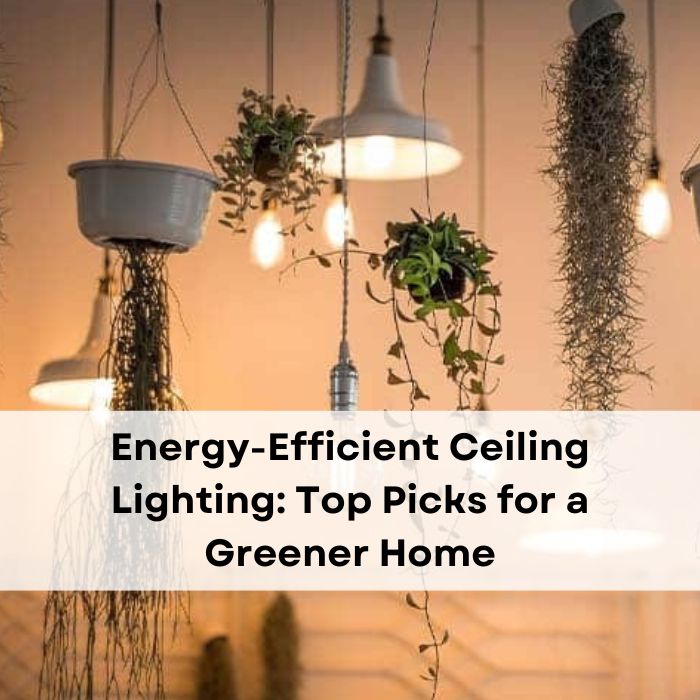Introduction: Why Energy-Efficient Ceiling Lighting Matters
Switching to energy-efficient ceiling lighting can transform your home’s energy use, reduce bills, and contribute to a greener environment. Traditional lighting consumes a large amount of electricity, which adds to both environmental pollution and household costs. With growing awareness of energy conservation, more homeowners are opting for sustainable ceiling light solutions. Energy-saving ceiling lights are designed to use less power while still providing high-quality illumination. This simple change not only enhances your home’s aesthetic but also benefits the planet.
What is Energy-Efficient Lighting?
Energy-efficient lighting refers to light sources that use less electricity to produce the same amount of light as traditional bulbs. The most popular types of energy-efficient lighting include LED ceiling lights, CFL ceiling lights, fluorescent ceiling lights, and smart lighting systems. These lights consume far less power while providing equal or even better lighting quality. In addition to saving energy, they often have a longer lifespan compared to incandescent or halogen bulbs. Choosing an eco-friendly ceiling light helps lower your environmental impact and contributes to long-term cost savings.
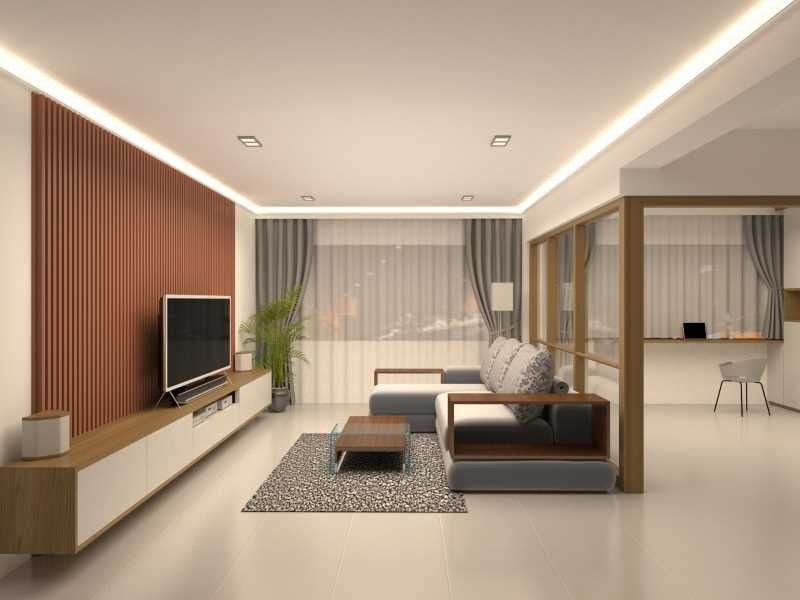
Image credit: Renotalk
Importance of Choosing Energy-Efficient Options
Choosing energy-efficient lighting isn’t just a trend; it’s a smart, sustainable choice. Traditional bulbs waste a lot of energy by producing heat, whereas energy-efficient options like LED ceiling lights focus more on light output. This results in less energy consumption and lower utility bills. Additionally, energy-saving ceiling lights are better for the environment because they reduce the need for electricity generation, which is often associated with carbon emissions. By making the switch, you’re helping both your wallet and the planet.
Benefits of Energy-Efficient Ceiling Lighting
Energy-efficient ceiling lighting offers numerous advantages, from reducing electricity bills to minimizing environmental impact. These lights use less energy while providing the same or better illumination compared to traditional bulbs. Additionally, they contribute to a more sustainable lifestyle by lowering carbon emissions and reducing energy consumption. By making the switch, you can enjoy long-term savings and eco-friendly living.
Lower Energy Bills
One of the most immediate benefits of energy-efficient ceiling lighting is the reduction in your energy bills. By using less electricity to produce the same or better lighting, low-energy ceiling lights can help you save up to 80% on your lighting costs. Over time, these savings can add up, making a significant impact on your household budget. Even though the initial cost of these lights may be higher, the long-term savings make them a worthwhile investment.
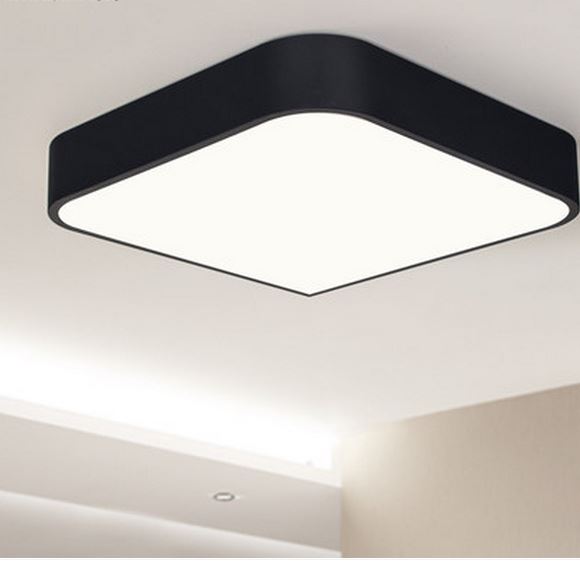
See this product: AXEL Square Case Ceiling Light
Eco-Friendliness and Sustainability
Energy-efficient lighting helps reduce the carbon footprint of your home. These eco-friendly ceiling lights require less energy to operate, which in turn decreases the demand for energy production, often a significant source of pollution. Additionally, many energy-efficient lights, like LEDs, are made with recyclable materials and do not contain harmful chemicals like mercury. This makes them a more environmentally friendly choice compared to traditional incandescent bulbs, which are less sustainable.

Image credit: Wipro Lighting
Enhanced Lighting Quality
Not only do energy-efficient lights save energy, but they also offer superior lighting quality. LED ceiling lights and CFL ceiling lights provide consistent, high-quality illumination without the flickering often associated with older lighting technologies. Additionally, many energy-efficient lighting options offer adjustable brightness and color temperatures, allowing you to customize the ambiance of your space. Whether you need bright task lighting or a cozy, warm glow, these dimmable ceiling lights provide versatility and functionality.
Types of Energy-Efficient Lighting
There are several types of energy-efficient lighting available for ceiling fixtures, each with its own benefits. Popular options include LED, CFL, and fluorescent lights, all of which consume less energy than traditional incandescent bulbs. Smart lighting systems also add convenience and efficiency, allowing users to control and optimize their lighting remotely. Choosing the right type can help you create the perfect lighting setup while maximizing energy savings.
LED Ceiling Light
LED (Light Emitting Diode) ceiling lights are the most energy-efficient and popular lighting option available today. LEDs use up to 90% less energy than traditional incandescent bulbs and last significantly longer, often up to 15,000 hours. Their durability and efficiency make them an excellent choice for ceiling lighting in any room of your home. Available in various styles, colors, and brightness levels, these green ceiling lights are perfect for both functional and decorative lighting. They’re also eco-friendly, as they contain no toxic materials and are recyclable.
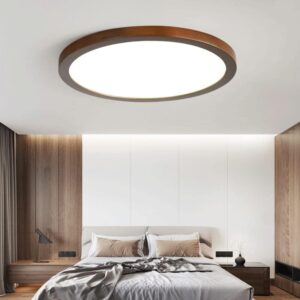
See this product: Amanrek Wooden Round Flush Mount Ceiling Light
CFL Ceiling Light
Compact Fluorescent Lights (CFLs) are another energy-efficient option, though they are gradually being replaced by LEDs due to advances in technology. CFL ceiling lights use about 70% less energy than traditional bulbs and have a longer lifespan. While they were once a popular choice for energy-efficient lighting, their use of mercury and the development of better LED technology has made them less favorable in recent years. However, they still provide good energy savings and are a viable option for those looking for a cost-effective eco-friendly ceiling light solution.
Fluorescent Ceiling Light
Fluorescent ceiling lights are well-known for their energy-saving capabilities. They consume less energy than incandescent bulbs and are often used in commercial spaces. While they are not as energy-efficient as LEDs, they still offer significant savings compared to older lighting technologies. Fluorescent ceiling lights provide bright, cool lighting, making them suitable for task-oriented areas like kitchens and workspaces.
Smart Ceiling Light Systems
Smart ceiling light systems combine energy efficiency with advanced technology. These lights can be controlled remotely using a smartphone or integrated with home automation systems, allowing for more efficient use of lighting. Smart ceiling lights often come with features like dimming, color changes, and timers, making them highly customizable. You can even schedule them to turn off when not needed, reducing energy waste. While they may have a higher upfront cost, their energy-saving potential and convenience make them a great long-term investment.

Image credit: ProptechOS
How to Choose the Right Energy-Efficient Ceiling Light
Selecting the right energy-efficient ceiling light depends on several factors, such as room size, purpose, brightness, and color temperature. Each space in your home requires different lighting, and energy-efficient options can meet those specific needs while keeping energy use low. Understanding lumens, color temperature, and style options will help you choose a light that enhances both functionality and design while saving energy.
Consider Room Size and Purpose
The first step in selecting energy-efficient ceiling lighting is to think about the size and function of the room. Different rooms have different lighting needs. For example, kitchens often require bright, focused lighting, while living rooms may benefit from softer, ambient light. By choosing lighting based on the room’s size and purpose, you can maximize both functionality and energy efficiency. Make sure the light output (measured in lumens) is suitable for the room’s size to avoid over- or under-lighting the space.
Brightness and Lumens
When choosing energy-efficient lights, it’s important to consider lumens rather than watts. Lumens measure the brightness of the light, while watts indicate energy use. With energy-efficient lighting, such as LED ceiling lights or CFL ceiling lights, you can achieve the same brightness with significantly fewer watts. For instance, a 10-watt LED bulb can produce the same amount of light as a 60-watt incandescent bulb. Make sure to select a light with the appropriate lumens for the intended space to ensure optimal lighting without wasting energy.
Color Temperature
Color temperature is measured in Kelvin (K) and determines whether a light appears warm or cool. Warmer temperatures (2700K-3000K) create a cozy, relaxing atmosphere, making them ideal for bedrooms and living rooms. Cooler temperatures (4000K and above) offer bright, clear lighting, which is better suited for kitchens, bathrooms, or workspaces. By choosing the right color temperature, you can enhance the functionality and mood of each room while staying energy-efficient with your eco-friendly ceiling light choices.
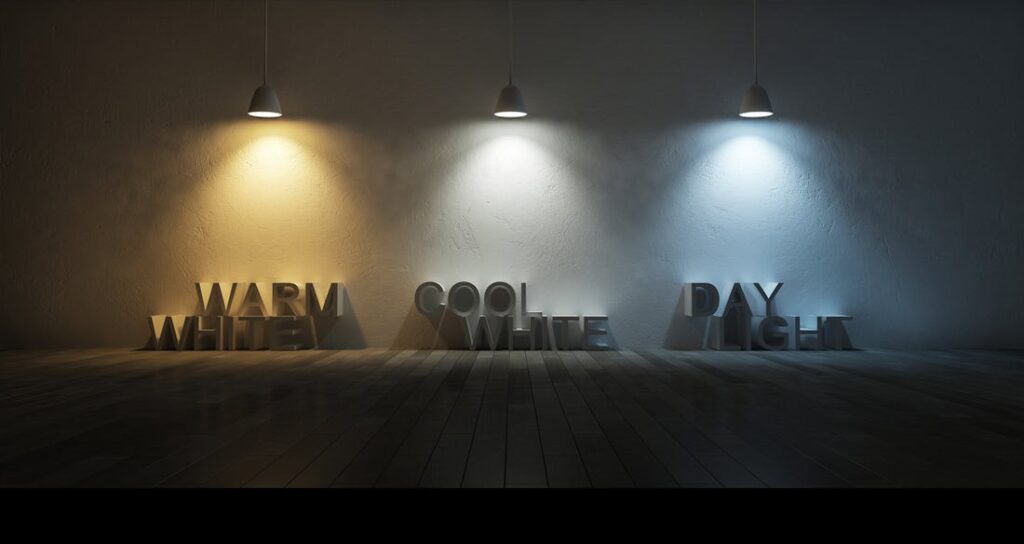
Style and Aesthetic
Energy-efficient lighting doesn’t mean you have to compromise on style. Today’s energy-efficient ceiling lights come in a wide variety of designs, from sleek modern fixtures to vintage-inspired options. Whether you prefer minimalist, industrial, or traditional designs, there’s a sustainable ceiling light to match your home décor. The key is finding a balance between functionality, energy savings, and aesthetics, ensuring that your ceiling lighting complements your space while saving energy.
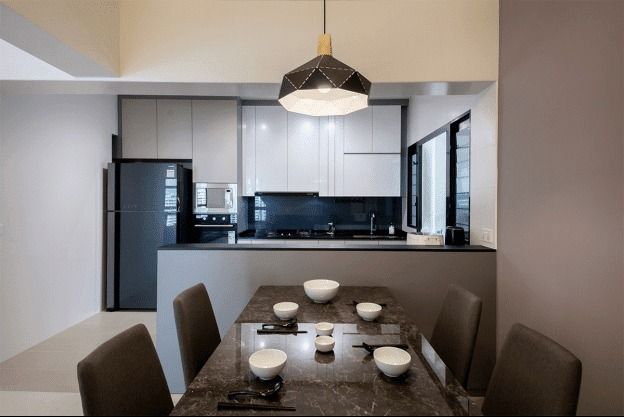
Image credit: Renopedia / Crescendo Interior
Top Picks for Energy-Efficient Ceiling Lighting
When looking for the best energy-efficient ceiling lighting options, consider fixtures designed for specific rooms. For living rooms, dimmable LED ceiling lights offer versatility, while kitchens benefit from brighter, task-oriented lighting. In bedrooms, softer, warm lights create a relaxing ambiance. From functional spaces like kitchens to cozy bedrooms, there are top energy-efficient lighting options tailored to each area of your home.
Best for Living Rooms
For living rooms, look for energy-efficient lighting options that are versatile and can create both bright and ambient settings. Dimmable LED ceiling lights are a great choice because they allow you to adjust the brightness based on the time of day or activity. Whether you’re hosting a gathering or enjoying a movie night, dimmable ceiling lights can offer the perfect lighting level. Some modern fixtures even come with smart lighting features, letting you control the lights with your smartphone for added convenience.
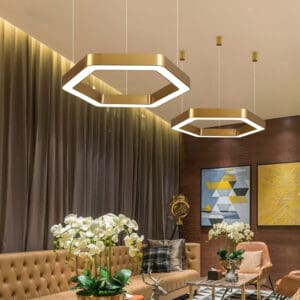
See this product: Hexanuu Hexagonal Ring Pendant Light
Best for Kitchens
Kitchens require bright, task-oriented lighting to ensure a safe and efficient workspace. Flush-mount LED ceiling lights are a top pick for kitchens because they provide ample light without taking up too much space. These fixtures are designed to distribute light evenly, ensuring that every corner of your kitchen is well-lit. Look for options that offer high lumens and cool color temperatures to enhance visibility while cooking or cleaning. Energy-efficient LED strip lighting under cabinets can also complement ceiling lights for even better functionality.

See this product: Clausray Fluffy Clouds Ceiling Light
Best for Bedrooms
In bedrooms, you’ll want to prioritize warm, soft lighting to create a relaxing atmosphere. Energy-efficient ceiling lights with adjustable color temperatures are ideal for this space. You can switch between a bright light for reading and a softer, cozier light for winding down at night. Dimmable LED fixtures or smart ceiling lights can help create the perfect balance of functionality and comfort, all while saving energy. Opt for recessed or flush-mount designs that provide adequate lighting without overwhelming the room’s décor.
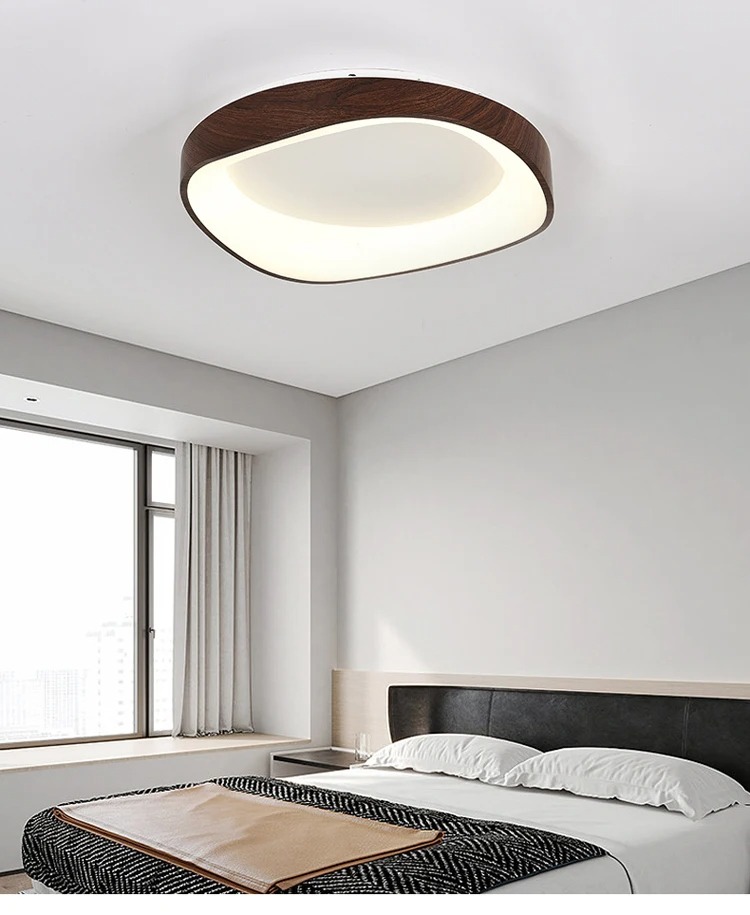
See this product: Ceciliar Modern Wavy Rectangular Ceiling Light
Best for Bathrooms
Bathrooms benefit from bright, clear lighting for grooming and hygiene tasks. LED ceiling lights with moisture-resistant properties are a smart choice for this space. These lights offer high lumens and color temperatures that mimic daylight, making tasks like applying makeup or shaving easier. For added convenience, consider installing smart ceiling lights with motion sensors that turn on automatically when you enter the room, reducing energy waste. Waterproof fixtures also ensure durability in the bathroom’s humid environment.
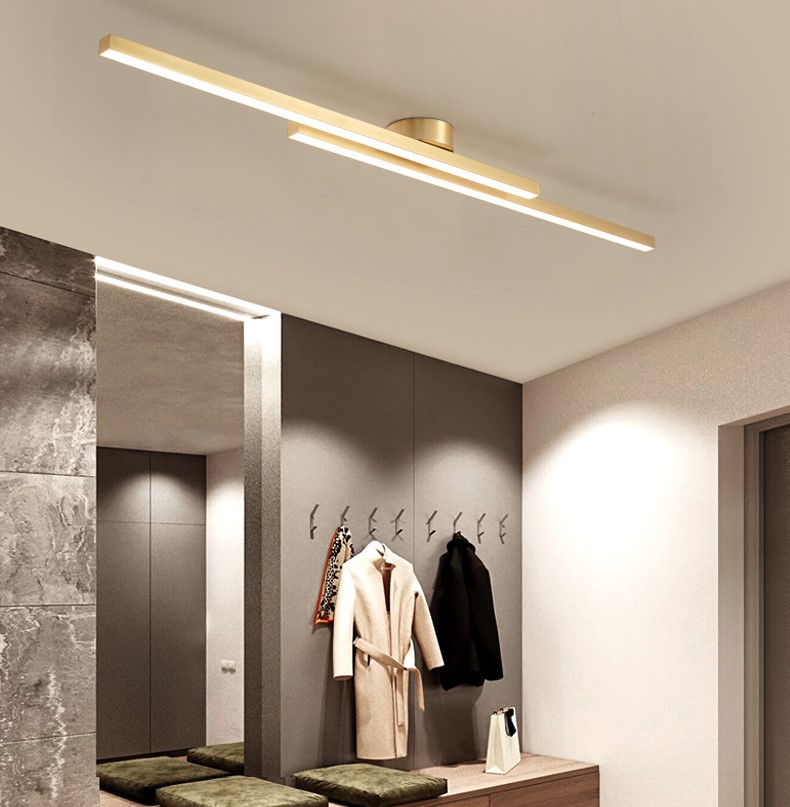
See this product: Torhild Twin Rectangular Ceiling Light
Best for Outdoor Spaces
Outdoor spaces can benefit from energy-efficient lighting, especially when it comes to security and ambiance. LED lights are perfect for outdoor areas because they are durable, energy-efficient, and available in weather-resistant models. Solar-powered lights are another excellent option for reducing energy use outdoors. They harness energy from the sun during the day and automatically light up your space at night. Whether you need path lighting, deck lighting, or overhead ceiling lights for a patio, low-energy ceiling lights can provide ample illumination while keeping energy costs low.

Image credit: Dark Light Design
How to Install Energy-Efficient Ceiling Lights
Installing energy-efficient ceiling lights can be a DIY project or handled by a professional, depending on the complexity of the fixture. Basic installations are usually straightforward, but smart or intricate lighting setups may require expert help. It’s important to follow safety precautions, such as turning off the power and securing the fixture correctly, to ensure proper installation and avoid electrical issues.
DIY Installation vs. Professional Help
Many energy-efficient ceiling lights are designed for easy installation, making them ideal for DIY projects. However, some fixtures, especially those with complex wiring or smart features, may require professional help. Before starting, assess your skill level and the complexity of the installation. While DIY can save money, improper installation could lead to electrical issues or reduced light performance. For peace of mind, especially with larger or more intricate fixtures, it’s often best to hire an electrician.
Safety Tips for Installation
Safety should always be a priority when installing ceiling lights. Begin by turning off the electricity at the breaker to avoid any accidents. Make sure to read the manufacturer’s instructions carefully, and use the right tools for the job. If you’re unsure about the wiring or the fixture’s compatibility with your home’s electrical system, consult a professional. Additionally, ensure that the fixture is securely mounted to avoid it becoming loose over time, especially in high-traffic areas like kitchens or living rooms.
Maintaining Energy-Efficient Lighting
Cleaning and Maintenance Tips
Regular cleaning is essential to maintain the brightness and efficiency of your ceiling lights. Dust and grime can accumulate on light fixtures over time, reducing their effectiveness. Use a soft, dry cloth to clean your lights periodically, and avoid harsh chemicals that could damage the fixture. For LED and CFL ceiling lights, avoid direct contact with water during cleaning. Keeping your ceiling lights clean will ensure that they continue to provide bright, efficient lighting throughout their lifespan.

Lifespan and When to Replace
Energy-efficient lights, especially LEDs, are known for their long lifespan, typically lasting up to 15,000 hours or more. However, they will eventually need replacement. Signs that it’s time to replace your energy-efficient bulbs include flickering, reduced brightness, or inconsistent lighting. When replacing bulbs, make sure to choose an energy-efficient option with a similar or higher lumens rating to maintain the quality of lighting in your home. Proper maintenance and timely replacement will help you maximize energy savings and lighting performance.
Conclusion: Illuminate Your Home the Eco-Friendly Way
FAQs
How much can I save on my energy bills with energy-efficient lighting?
Energy-efficient lighting can reduce your energy bills by up to 80%, depending on how many traditional bulbs you replace.
Are LED lights better than CFLs?
Yes, LED lights are generally more energy-efficient, last longer, and do not contain harmful materials like mercury, which is found in CFLs.
What is the ideal color temperature for different rooms?
For relaxing spaces like bedrooms and living rooms, opt for warmer temperatures (2700K-3000K). Cooler temperatures (4000K and above) are best for kitchens and bathrooms.
Can I install energy-efficient ceiling lights on my own?
Yes, many energy-efficient ceiling lights are designed for easy DIY installation. However, if you are not confident, hiring a professional is always a good idea.
See Related Article:
The Ultimate Guide to Ceiling Lights: Choosing the Perfect Fixture for Every Room
